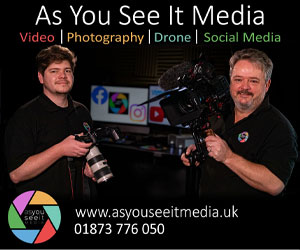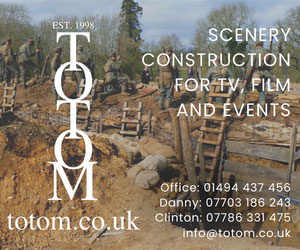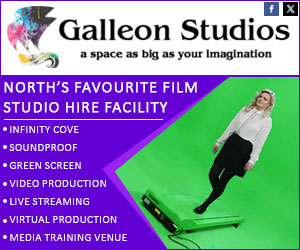Broadcast News
17/10/2017
Acoustics For Small Studios

Traditionally, film and television post production has been carried out in large purpose-built studios, which makes sense from an acoustic point of view; large rooms generally sound better than small rooms, explains Chris Walls from Level Acoustic Design.
Dolby has set minimum dimensional requirements for film post production studios to help ensure an accurate monitoring response and achieve better translation from studios to cinemas. For example, a Dolby certified studio mixing feature films must have a minimum finished floor area of 45m2; once acoustic treatment, partitioning and access are taken into account, the total space required can be more than 80m2 (860sq ft). And that is without a projection room, machine room, breakout space, reception...
High property and operating costs combined with the capital cost of building and equipping studios mean building large studios is not always financially viable. It is therefore not surprising that there is an increasing trend towards building smaller studios in which the majority of audio post production can be completed before moving to a larger facility for final tweaks and print masters.
There are however a few inherent acoustic limitations in small rooms which require particular attention during design if accurate monitoring and reasonable translation are to be achieved:
• Low frequency anomalies caused by room modes
• Colouration due to reflections from room boundaries and equipment
• Achieving a balanced energy response within the room
Room modes
The low frequency monitoring accuracy in a studio is largely dictated by the modal behaviour of the room. Room modes are frequencies whose wavelengths have a simple correlation with the room geometry and at these frequencies the amplitude response is significantly affected. Modes are generally quite spread out at low frequencies which gives rise to an uneven amplitude response, with some frequencies being supported by modes and others not. The number and density of modes increases with increasing frequency to a point where there are multiple modes at each frequency and the sound field is much more even. The frequency at which this happens is directly related to the room size and is lower for a larger room, meaning larger rooms naturally have a more even low frequency response.
It is quite common for very small studios to have pronounced modal behaviour into the low – mid frequency region. When designing small studios, it is therefore particularly important to deal with the prominent modal frequencies to ensure they do not adversely affect the monitoring response. Where space is limited, this can only practically be achieved using resonant absorbers such as membrane, Helmholtz or panel absorbers; foam and rockwool will do very little to help at these frequencies. It is possible to mitigate the worst of the room mode effects with careful design and this is key to achieving good translation between small studios, large studios and, in the case of film mixing, cinemas.
Reflections
Reflections arriving at the mix position will arrive sooner and be stronger in a small room than a large room due to the closer proximity of the partitions. Strong, early reflections will combine with the sound arriving directly from the loudspeakers and cause errors in the frequency response and stereo imaging. Acoustic treatment in small rooms must therefore be designed to attenuate early reflections such that they do not adversely affect the direct sound, which in practice means attenuating them by at least10dB relative to the direct sound. This requires careful consideration of the loudspeaker, mix position and acoustic treatment positioning.
Another reflection-based problem is the boundary interference effect whereby sound emanating from a loudspeaker is reflected by nearby surfaces (typically the wall behind) and arrives back at the loudspeaker with a 180° phase shift causing cancellation and a resulting notch in the frequency response. The notch frequency is dependent on the distance between the loudspeaker and the offending boundary. In a large room it is generally possible to position the loudspeakers far enough from any room boundary that the notch is below the speaker's cut-off frequency, however in small rooms the notch frequency will generally be in the 80Hz – 150Hz region and often there will be several notch frequencies relating to several nearby boundaries. Dealing with boundary interference effects in small rooms can be tricky but considered positioning of loudspeakers can generally give a satisfactory low frequency response. The best solution to the problem is to flush-mount the loudspeakers in a solid wall, thereby eliminating the problematic rearward radiation. However the loudspeakers typically specified for small studios are not normally suitable for flush mounting.
Achieving balanced energy
The solutions to small room problems generally involve using acoustic treatment to absorb sound in the room. It is important when designing the absorption in any room that a suitable balance of low, mid and high frequency energy is maintained. If a room, particularly a small room, is treated solely with foam or mineral wool panels (which absorb primarily high frequencies) it will tend to have a lot of low frequency energy and very little upper mid and high frequency energy. This is generally what has happened when people complain of rooms sounding "boomy".
Acoustic treatment in small studios should comprise low frequency absorption, generally in the form of resonant absorbers, and judiciously placed foam or mineral wool absorbers. The former will deal with prominent room modes and the latter with problematic reflections. Together they give an even balance of low and high frequency energy. This, combined with careful positioning of the loudspeakers and mix position, will result in a great sounding studio.
When it comes to room acoustics for audio studios, bigger is generally better. Designing small studios largely involves mitigating potential problems thrown up by the reduced size, however with careful design it is possible to achieve a small studio which enables accurate monitoring and translates well to larger studios and the final delivery format.
Level Acoustic Design provides high end acoustic design for the music, post & broadcast industries. Clients include: NBC Universal, YouTube, ITV, Goldcrest, Halo, Molinare, Deluxe Technicolor & Abbey Road Studios.
www.levelacousticdesign.com
This article is also available to read in the October edition of Broadcast Film & Video here, page 35.
(JP)
Dolby has set minimum dimensional requirements for film post production studios to help ensure an accurate monitoring response and achieve better translation from studios to cinemas. For example, a Dolby certified studio mixing feature films must have a minimum finished floor area of 45m2; once acoustic treatment, partitioning and access are taken into account, the total space required can be more than 80m2 (860sq ft). And that is without a projection room, machine room, breakout space, reception...
High property and operating costs combined with the capital cost of building and equipping studios mean building large studios is not always financially viable. It is therefore not surprising that there is an increasing trend towards building smaller studios in which the majority of audio post production can be completed before moving to a larger facility for final tweaks and print masters.
There are however a few inherent acoustic limitations in small rooms which require particular attention during design if accurate monitoring and reasonable translation are to be achieved:
• Low frequency anomalies caused by room modes
• Colouration due to reflections from room boundaries and equipment
• Achieving a balanced energy response within the room
Room modes
The low frequency monitoring accuracy in a studio is largely dictated by the modal behaviour of the room. Room modes are frequencies whose wavelengths have a simple correlation with the room geometry and at these frequencies the amplitude response is significantly affected. Modes are generally quite spread out at low frequencies which gives rise to an uneven amplitude response, with some frequencies being supported by modes and others not. The number and density of modes increases with increasing frequency to a point where there are multiple modes at each frequency and the sound field is much more even. The frequency at which this happens is directly related to the room size and is lower for a larger room, meaning larger rooms naturally have a more even low frequency response.
It is quite common for very small studios to have pronounced modal behaviour into the low – mid frequency region. When designing small studios, it is therefore particularly important to deal with the prominent modal frequencies to ensure they do not adversely affect the monitoring response. Where space is limited, this can only practically be achieved using resonant absorbers such as membrane, Helmholtz or panel absorbers; foam and rockwool will do very little to help at these frequencies. It is possible to mitigate the worst of the room mode effects with careful design and this is key to achieving good translation between small studios, large studios and, in the case of film mixing, cinemas.
Reflections
Reflections arriving at the mix position will arrive sooner and be stronger in a small room than a large room due to the closer proximity of the partitions. Strong, early reflections will combine with the sound arriving directly from the loudspeakers and cause errors in the frequency response and stereo imaging. Acoustic treatment in small rooms must therefore be designed to attenuate early reflections such that they do not adversely affect the direct sound, which in practice means attenuating them by at least10dB relative to the direct sound. This requires careful consideration of the loudspeaker, mix position and acoustic treatment positioning.
Another reflection-based problem is the boundary interference effect whereby sound emanating from a loudspeaker is reflected by nearby surfaces (typically the wall behind) and arrives back at the loudspeaker with a 180° phase shift causing cancellation and a resulting notch in the frequency response. The notch frequency is dependent on the distance between the loudspeaker and the offending boundary. In a large room it is generally possible to position the loudspeakers far enough from any room boundary that the notch is below the speaker's cut-off frequency, however in small rooms the notch frequency will generally be in the 80Hz – 150Hz region and often there will be several notch frequencies relating to several nearby boundaries. Dealing with boundary interference effects in small rooms can be tricky but considered positioning of loudspeakers can generally give a satisfactory low frequency response. The best solution to the problem is to flush-mount the loudspeakers in a solid wall, thereby eliminating the problematic rearward radiation. However the loudspeakers typically specified for small studios are not normally suitable for flush mounting.
Achieving balanced energy
The solutions to small room problems generally involve using acoustic treatment to absorb sound in the room. It is important when designing the absorption in any room that a suitable balance of low, mid and high frequency energy is maintained. If a room, particularly a small room, is treated solely with foam or mineral wool panels (which absorb primarily high frequencies) it will tend to have a lot of low frequency energy and very little upper mid and high frequency energy. This is generally what has happened when people complain of rooms sounding "boomy".
Acoustic treatment in small studios should comprise low frequency absorption, generally in the form of resonant absorbers, and judiciously placed foam or mineral wool absorbers. The former will deal with prominent room modes and the latter with problematic reflections. Together they give an even balance of low and high frequency energy. This, combined with careful positioning of the loudspeakers and mix position, will result in a great sounding studio.
When it comes to room acoustics for audio studios, bigger is generally better. Designing small studios largely involves mitigating potential problems thrown up by the reduced size, however with careful design it is possible to achieve a small studio which enables accurate monitoring and translates well to larger studios and the final delivery format.
Level Acoustic Design provides high end acoustic design for the music, post & broadcast industries. Clients include: NBC Universal, YouTube, ITV, Goldcrest, Halo, Molinare, Deluxe Technicolor & Abbey Road Studios.
www.levelacousticdesign.com
This article is also available to read in the October edition of Broadcast Film & Video here, page 35.
(JP)
Top Related Stories
Click here for the latest broadcast news stories.
06/12/2022
Gold Diggers Transforms Studios Into Audio Music Mixing Rooms
Gold Diggers, a unique music production complex in East Hollywood, Los Angeles, has transformed two of its seven studios into immersive audio music mi
Gold Diggers Transforms Studios Into Audio Music Mixing Rooms
Gold Diggers, a unique music production complex in East Hollywood, Los Angeles, has transformed two of its seven studios into immersive audio music mi
02/04/2024
Cablecast To Preview New Social Streaming And Control Rooms Features
Cablecast Community Media will preview its new Social Streaming and Control Rooms features, which simplify direct streaming and simulcasting to social
Cablecast To Preview New Social Streaming And Control Rooms Features
Cablecast Community Media will preview its new Social Streaming and Control Rooms features, which simplify direct streaming and simulcasting to social
21/02/2024
Qube Installs PMC Monitors In Four Production Rooms
Qube, the world's first members' studio for musicians, podcasters and content creators, has invested in PMC result6 nearfield monitors for four of its
Qube Installs PMC Monitors In Four Production Rooms
Qube, the world's first members' studio for musicians, podcasters and content creators, has invested in PMC result6 nearfield monitors for four of its
30/11/2023
TVNZ Adopts AWS Clean Rooms
At AWS re:Invent, Amazon Web Services (AWS) has announced that Television New Zealand (TVNZ), New Zealand's state-owned, commercially funded televisio
TVNZ Adopts AWS Clean Rooms
At AWS re:Invent, Amazon Web Services (AWS) has announced that Television New Zealand (TVNZ), New Zealand's state-owned, commercially funded televisio
05/04/2023
Audio-Technica's ATND1061DAN Ceiling Array Cerified For Use With Zoom Rooms
Audio-Technica has announced that its ATND1061DAN Ceiling Array has been certified for use with Zoom Rooms, as part of a Q-SYS system that includes th
Audio-Technica's ATND1061DAN Ceiling Array Cerified For Use With Zoom Rooms
Audio-Technica has announced that its ATND1061DAN Ceiling Array has been certified for use with Zoom Rooms, as part of a Q-SYS system that includes th
22/02/2023
Autodesk Introduces Moxion Rooms
Autodesk has introduced Moxion Rooms, a forensically secure review solution enabling creative teams in production and post-production to share live st
Autodesk Introduces Moxion Rooms
Autodesk has introduced Moxion Rooms, a forensically secure review solution enabling creative teams in production and post-production to share live st
27/06/2022
TVE Starts Up A New Set Of Continuity Control Rooms
AEQ has won the public tender for the supply and commissioning of the monitoring system for the 1-2 continuity room. Televisión Española (TVE) is the
TVE Starts Up A New Set Of Continuity Control Rooms
AEQ has won the public tender for the supply and commissioning of the monitoring system for the 1-2 continuity room. Televisión Española (TVE) is the
26/11/2019
Broadcast Solutions Upgrades Director's Cut Production Control Rooms
The Finnish production company Director's Cut, based in Helsinki, has recently equipped part of its production facilities with new technology and opti
Broadcast Solutions Upgrades Director's Cut Production Control Rooms
The Finnish production company Director's Cut, based in Helsinki, has recently equipped part of its production facilities with new technology and opti
31/07/2018
Atlona Integrates Zoom Rooms Solution With IP-Based AV Control
Atlona is to integrate Zoom Video Communications' popular Zoom Rooms solution with its Velocity platform. The integration will bring IP-based AV contr
Atlona Integrates Zoom Rooms Solution With IP-Based AV Control
Atlona is to integrate Zoom Video Communications' popular Zoom Rooms solution with its Velocity platform. The integration will bring IP-based AV contr
20/04/2016
Production News : Four Rooms Recommissioned By C4
The award winning Four Rooms has been recommissioned for a further 20 episodes by Channel 4. The factual formatted series that offers sellers a once-i
Production News : Four Rooms Recommissioned By C4
The award winning Four Rooms has been recommissioned for a further 20 episodes by Channel 4. The factual formatted series that offers sellers a once-i
24/07/2014
A&H Chosen For Vegas Rooms
FOH engineer Ben Hammond chose Allen & Heath’s GS-R24 console as the centrepiece for his new studio, the Vegas Rooms, in the Chairworks Studios. "Incr
A&H Chosen For Vegas Rooms
FOH engineer Ben Hammond chose Allen & Heath’s GS-R24 console as the centrepiece for his new studio, the Vegas Rooms, in the Chairworks Studios. "Incr
06/12/2012
DaVinci Resolve 9 For Colour Correction Selected For HGTV's Million Dollar Rooms
Produced by Channel 8 Entertainment, an independent television production company based in Torrance, CA, HGTV's Million Dollar Rooms takes a look at t
DaVinci Resolve 9 For Colour Correction Selected For HGTV's Million Dollar Rooms
Produced by Channel 8 Entertainment, an independent television production company based in Torrance, CA, HGTV's Million Dollar Rooms takes a look at t
18/05/2012
Doremi To Equip All Rooms At The 65th Cannes Film Festival
In 2003, when Doremi first installed its servers at Cannes for the screening of James Cameron's "Ghosts of the Abyss", it initiated a relationship of
Doremi To Equip All Rooms At The 65th Cannes Film Festival
In 2003, when Doremi first installed its servers at Cannes for the screening of James Cameron's "Ghosts of the Abyss", it initiated a relationship of
03/11/2011
First Media Introduces Dolby Digital Plus To Living Rooms Across Indonesia
First Media has implemented Dolby Digital Plus surround sound as part of its HD pay-TV service offering. "With Dolby Digital Plus as part of our HD se
First Media Introduces Dolby Digital Plus To Living Rooms Across Indonesia
First Media has implemented Dolby Digital Plus surround sound as part of its HD pay-TV service offering. "With Dolby Digital Plus as part of our HD se
12/08/2008
AKA: Changing Rooms At The BBC
Studio furniture specialist AKA Design has equipped two high-end online editing suites for BBC Post Production, part of BBC Resources Ltd, a wholly ow
AKA: Changing Rooms At The BBC
Studio furniture specialist AKA Design has equipped two high-end online editing suites for BBC Post Production, part of BBC Resources Ltd, a wholly ow















